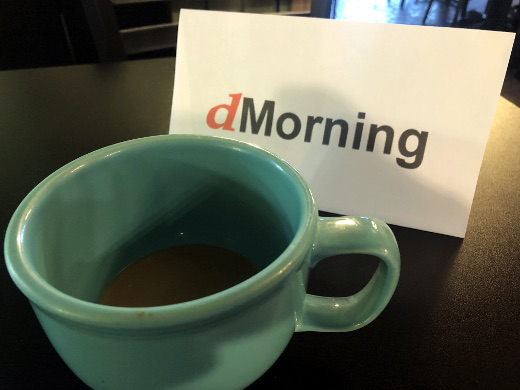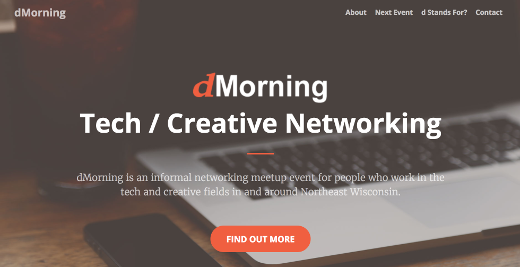Mike Maddaloni Featured in Associated Press Article on Amazon Ads
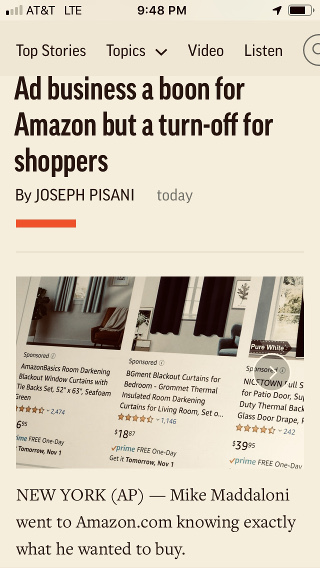 They’re everywhere. They’re annoying. But they’re effective.
They’re everywhere. They’re annoying. But they’re effective.
Where the above 3 sentences could apply to a lot of things, here I’m talking about Internet advertising. From banner ads to text ads to search ads, they are what supposedly finances the Web site you are on, or at least that’s the idea. The earnings from ads here on The Hot Iron this month won’t even buy me an hour of on-street parking in my city. But some ads, especially those found when searching for something, can be very lucrative.
My thoughts on these ads and how they are pervasive on Amazon.com was featured in an article published today by the Associated Press. Titled “Ad business a boon for Amazon but a turn-off for shoppers” by Joseph Pisani, I was one of a few who talked about the ads and their impact on consumers. An example of a recent frustration I had when searching for a product on Amazon opened the article.
I connected with the author through Twitter, seeing a tweet of his asking for people to share their experiences on searching for products on Amazon. The example I stated was real – when I was searching for one product the results showed a different “featured” brand, followed by other brands then 4 or 5 items down the list (differing on various searches) I found the brand and model I was looking for.
Is this type of advertising deceptive? It’s hard to see the small text or icon stating the other items are ads. These days I look for these things, others may just buy the product that paid to be at the top of the list. The ads on Amazon are unique as most all of the items are for sale through the site, and I say that as Amazon even displays paid ads for products on other sites.
The reach of the AP
Articles published by the Associated Press are often carried verbatim or in a modified form on many news outlets. As a result this article can be read on the Web sites for the New York Times, Fox Business, ABC News and even in the Spanish Edition of the San Diego Union-Tribune. Thanks to Jonathan Hoenig for first bringing the article to my attention.
I welcome your thoughts on these types of ads and if they have impacted you, as well as any comments on the article in general.
This is from The Hot Iron, a journal on business and technology by Mike Maddaloni.
Did you enjoy this? Subscribe to The Hot Iron by RSS/XML feed or Read by Email
Business • Strategize • Technology • Web Design • (0) Comments • PermalinkLiterally Promoting Search in 1999
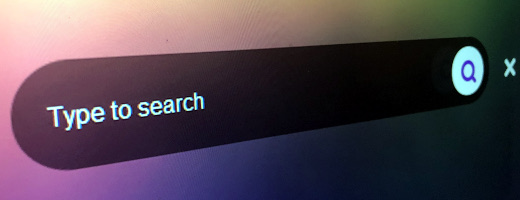
It’s been said if you can’t find anything on the Web by searching for it, it may as well not even exist. Since Google’s launch over 20 years ago that has certainly been the mantra, as their single search box with precise search results trumped all other search engines out there to become the dominant search destination it is today.
Around that same time, I felt the same about search, but on a slightly smaller scale, though with an international reach. I was literally promoting search for the Intranet portal for a global professional services firm in 1999.
Search Hidden and With Good Reason
In 1999 I became the manager of the front-end development team for this portal, which meant I was responsible for leading the team creating and enhancing its Web pages. As part of the role, I had to evaluate the functionality and design we had already, as the portal was being developed by a consulting team that was rolling off the project. When I evaluated the search function, by my best approximation it was poor to non-functional and of no value to anyone using it.
As I quickly came to learn, search was not a priority for the portal. The business sponsors didn’t even want people to simply search for content, rather to use a complex, nested set of 3 drop-down lists to select a category for which content would be presented. If that sounds convoluted, it was. The categories, or taxonomy, mirrored the structure of the firm. The idea was you would navigate to where you “worked” and voila, there would be content waiting for you.
Or so one would think, however this wasn’t always the case. Many times there wasn’t any content there, especially in the early days to months of the portal. But that wasn’t that my concern, as we had an entire other team working on getting content into the portal. The concern for my team and I was to ensure the front-end of the portal worked and was usable.
There was no real urgency to make search function well and have a great user experience as accessing it, as it was literally tucked behind an unlabeled icon of a magnifying glass on the second page of the portal, one you would miss on first glance. There was an option on the first page of the portal prominently labeled search, but it simply led users to a list of public Internet search engines, such as Lycos and Yahoo. Remember, this was 1999.
A Better Way to Content
After the launch of the portal, we decided to tackle search. The task of working on the search engine went to our top developer. He had both a programming and mathematics background, and was eager to get search working. After some time, he was successful, and it was a highly functional and useful feature of the portal, though most people still didn’t know about it. We added a text label to the search icon and others near it where it wasn’t obvious what their functions were. Even then, you had to click the icon which took you to another page where you got a search box, adding steps (aka barriers) to get to the content you want. Over time we found that portal users were using search, and we on the development team used it to validate testing for content. Even with this new label, search was still not a prominent feature on the site, nowhere to the degree I felt it should be.
Making the Case for Search and navigation
With the initial launch of the portal and other changes including the search function behind us, it was on to version 2.0. There was a laundry list of features wanted for the portal, and one was a new user interface. As my team worked through designs and functionality, they proposed putting a search box in a prominent position on the Web site, at the top left corner, literally promoting it from obscurity. Studies of people using Web pages have shown consistently over the years people start at the top, go across the top and down the left side. By placing the search box and button at the top left, there was no extra step needed to get to search results.
I was pleased with the work and designs we put together, and then we started the process of presenting it up the food chain of the leadership for review and approval. We knew we would have tweaks and adjustments to make, but we were hopeful much of the work we did would persist, especially search.
When we presented it to the director of the development team, my direct manager, he liked it. The next step was to present it to his manager, who was the overall director of technology. But he didn’t like it. He felt it went against the goal of navigating to content and wouldn’t be approved by the top leadership of the team. We pointed out the 3 drop-down lists remained, and people could still choose to use them, as well as the work we did to improve the search function. My director was also reinforcing this, from a usability standpoint, so the busy consultants in the field could get to the content they wanted. After hesitation he agreed we could present the search box design to senior leadership but that he would not back us up on it. This was fine by me, as myself and my director would be the ones presenting it.
Shortly after this less than exciting meeting, we had the meeting with the senior leadership and business leaders for the portal to present our proposals for version 2.0. We were in a beautiful and expensive conference room with cutting-edge functionality, very expensive for that time. We had an orchestrated presentation where myself and my peers would be presenting their team’s work on the next version of the portal, with the onus on me to present the new design and the search box.
When it was my turn, I was ready – the design was cleaner and more modern, at least for standards of that time. As I presented it, I talked to the major features in priority order, and search was near the middle of it. When I brought it up, I talked to the search improvements we made, the gain in traffic to the search page and how users could still navigate to it as they have before. As I finished saying this, I saw the director of the technology literally turn away from the table, though I don’t think anyone else noticed it. As I concluded the lead partner who oversaw the entire portal looked down, and I could tell he was thinking it over. He said he liked it. Relief doesn’t begin to describe the feeling I had, and I was excited for the meeting to end to share the great news with the team.
Another Search Goal Fulfilled Years Later
As we worked on version 2.0, we did a lot of talking about the future of the portal and how it could be enhanced. I had the idea of putting a “header” or section on the pages of other portals within the firm. This header would be a thin bar across the top of the page with links back to our portal as well as a search box. It was an idea that was batted around my team, but one I was not there to even take to any design phase, for not long after version 2.0 was released, I left the firm, being lured by a dot-com startup that folded a mere half-year later (and a topic for another time).
About a half-dozen years later, my wife got a job with this same firm, but working with a consulting practice. In between those years the portal itself had gone through significant change, namely not being the focal point for the firm it was previously. One night as she was catching up on some work at home, I looked over her shoulder to see what she was doing. Much to my surprise she was on a page of the firm’s Intranet, where our portal had lived, and across the top of the page she was on was a header bar similar to what I just described. Needless to say it made me smile, and I was patting myself on the back as I walked away.
Deconstructing Promoting Search
Technology and the way we interface with it is always changing. New ideas must be encouraged, embraced and tested to truly see their effectiveness. Search is one of those areas, and its importance is even more important today. In this case the functionality of the search box was not the innovation, rather promoting it to a position of prominence on the Web pages. Where I cannot take credit for the design of the header bar that evolved over time, it in itself was an evolution of what we started with and presented with mixed results now over 20 years ago.
This is from The Hot Iron, a journal on business and technology by Mike Maddaloni.
Did you enjoy this? Subscribe to The Hot Iron by RSS/XML feed or Read by Email
Business •
Strategize •
Technology •
Thrive •
Web Design •
(1) Comments •
Permalink
Next dMorning Tech Creative Networking Event on November 9
The next dMorning meetup networking event will be on Friday, November 9 from 7:30 – 9:30 am at Copper Rock Coffee Co., 210 W. College Avenue in Appleton, Wisconsin.
dMorning was started to provide a casual environment for those who work in the technology and creative fields in Northeast Wisconsin to meet, network and have a beverage of choice. The idea is to meet in the morning before the day gets hectic. There are no set rules and no agenda. More information is available at dMorning.com.
Hope to see you there!
This is from The Hot Iron, a journal on business and technology by Mike Maddaloni.
Did you enjoy this? Subscribe to The Hot Iron by RSS/XML feed or Read by Email.
Announcements • Business • Technology • (0) Comments • Permalink
My Guest Lecture at University of Wisconsin – Oshkosh on Consulting
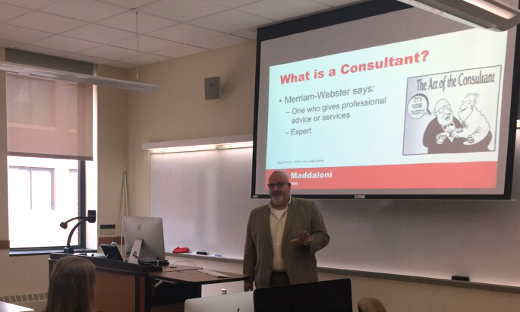
Great interactive classroom instruction coupled with real-world work opportunities provide the best educational experience for students. When you have the chance to help make that happen, it’s extremely rewarding. That happened for me recently as I was a guest lecturer at a university class.
I was honored to be asked once again by Dr. Sara Steffes Hansen, a professor at University of Wisconsin – Oshkosh and chair of the Journalism department. Her class, Application of New & Emerging Media, provides that educational experience working with entities in the community on their social media and beyond. As her students make on-site visits to their clients, I was asked to speak to the class on the topic of consulting.
Last year I spoke to students in the same class, but after their client visit, where this year it was ahead of it. As meeting face-to-face with clients involves many factors – factors many don’t execute on well – I incorporated a role play into the interactive lecture. With a “volunteer” student, I did an improvised sketch where the student was the client and I was the bumbling, unprepared consultant. This segued into my discussion on preparing for and executing on the on-site visit, as well as the follow-up and deliverables from the class assignment.
For me, this guest lecture served many purposes. As I have learned from others, both in the classroom and in the real world, I welcome the opportunity to share my experience and “war stories” with the students. As someone who still thinks and works like a consultant, poor consulting skills from others stick out like a sore thumb soaked in sriracha and lit on fire! If this lecture can help guide students down the path of honing their consulting skills, then the world will be that much better.
This class is part of the UW – Oshkosh’s Interactive Web Management major, which is a combination of curricula from Computer Science, Marketing, Journalism and Information Systems. It is a unique major, mashing up key aspects of each of these areas to offer a comprehensive educational background for how companies today are staffing roles in marketing and tech.
Where you needed to be enrolled in the class to get the full lecture, I am sharing my slides. You can link to the slides from my guest lecture here on SlideShare, or view them embedded below. I am planning on coming back to the class at the end of the semester to watch their client presentations. In the meantime I wish great success to the students of Journalism 61-440!
This is from The Hot Iron, a journal on business and technology by Mike Maddaloni.
Did you enjoy this? Subscribe to The Hot Iron by RSS/XML feed or Read by Email.
Announcements • Business • Strategize • Technology • Thrive • (0) Comments • Permalink
dMorning Tech Creative Networking In Northeast Wisconsin on October 19
I am thrilled to announce a networking event for people who work in the tech and creative fields in Northeast Wisconsin. Introducing dMorning.
What is dMorning?
The idea behind dMorning is relatively simple – informal networking before the busy workday starts, with no set rules and no agenda. Since I moved to the Fox Valley last year, I have been looking for something like this, as I work in the Web and I am looking to meet people who work in similar fields in the area.
I hosted a variety of meetups when I lived in Chicago – some very specific and others more general – and have found the latter to be more interesting and worthwhile. A casual gathering of people to talk about what they are working on, sharing stories and bouncing ideas off each other… this is something I have wanted to restart for a while, and why not here? My plan is for this to be a monthly event.
The next dMorning will be on Friday, October 19 beginning at 7:30 am at All Seasons Coffeehouse in Appleton, conveniently located off I-41 at Wisconsin Avenue. I say it ends at 9:30 am, but anyone can stay longer. There is no cost for dMorning; you just pay for any beverages or food you purchase from this locally-owned business.
What’s in a name?
So why did I call this dMorning? As I sought out a name for this event, I didn’t want to pick something too limiting. On the Web site at dMorning.com there are some ideas of what the “d” can stand for.
Hope to see you there!
This is from The Hot Iron, a journal on business and technology by Mike Maddaloni.
Did you enjoy this? Subscribe to The Hot Iron by RSS/XML feed or Read by Email.
Announcements • Technology • Thrive • Web Design • Web Development • (0) Comments • Permalink

